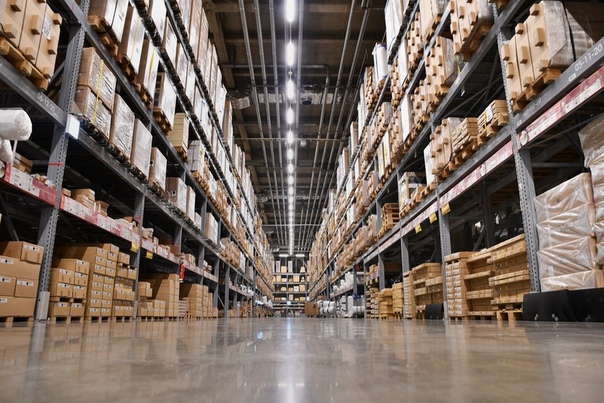Storage of goods in a warehouse is one of the most popular services and There are many companies on the market that offer storage of goods in a warehouse. Warehouses ensure availability of room to store products until they are needed. The efficiency, capacity and location of storage facilities provide economic benefits to landlords. Most warehouses have processing, packing, labeling, and sorting equipment, which means small business owners can save more by not paying third parties during the order fulfillment process. There are different types of warehouses offering goods storage services, and before making a choice in favor of one or another warehouse, it is necessary to check its internal infrastructure.
Storage conditions
The storage conditions of goods is an important point that you should pay attention to, because the safety of products depends on it. These include environmental conditions - temperature, humidity, sunlight, etc. Each room must have a good ventilation system.
Conditions, as well as storage technology, depend on the characteristics of the goods.
Metal and its products must be stored in a room protected from precipitation, otherwise the corrosion process will begin. The room should be clean, and the air temperature should not fall below 8 degrees.
When storing solid fuels, the storage room must be well equipped with fire extinguishing equipment.
The storage conditions for food products include, in addition to the correct microclimate, sanitary and hygienic conditions, and proper placement of products. There are several different types of food premises. The most common storage types include dry storage, storage in refrigerator or cooling, and frozen or cold storage. Cereals, grains, flour are kept in insulated warehouses, and confectionery, sugar, dried fruits, food concentrates, canned food, etc. are stored in heated rooms, where stable relative humidity and above-zero temperature are guaranteed.
Locations for storing goods are one of the main points when placing goods in a warehouse, since the rules for joint storage must be observed. For example, it is not recommended to store metal and rubber products with chemical products nearby.
Storage rules
Proper transportation and storage of goods is the key to the safety of products and the income of the entrepreneur as a result. Rules may vary and differ depending on the goods to be stored. Proper storage technology includes proper placement of goods and their packaging, as well as the availability and maintenance of optimal storage conditions.
The process of storing goods begins with the placement of products. There are generally accepted methods of allocation, such as varietal method, batch, batch and varietal, and allocation by name.
With the varietal method, products entering the warehouse are divided according to such parameters as cost, manufacturer, name, etc.
With the batch method, each batch of goods is stored separately and individual records are kept for each of the batches.
The batch-varietal method provides for the separate storage of each batch received at the warehouse, but at the same time, within this batch, the products are disassembled by grade.
When using the placement method by name, the main criterion for the distribution of goods is its name.
In addition to the standard requirements, there are also requirements for the storage of certain types of goods, such as food, which are stored in rooms with strict observance of the temperature regime, as well as the rules of the commodity neighborhood.
Methods of storage
The right choice of storage system guarantees the maximum use of space while increasing the efficiency of the warehouse. Two methods of storage are used most often - rack and stack. The choice in favor of one of the methods is determined by the specifics of the cargo itself.
The stacking method is used when storing cargo that is in bags, boxes, barrels. It can be both food and non-food products. Factors such as load weight, load stability, pallet condition, safety factor, weather conditions and allowable clearance height are key components to consider before determining stack levels.
With the racking method of stacking, the unpacked cargo are placed in the cells of the racks as well as the goods in individual packaging. The pallet racking structure consists of vertical columns and horizontal beams. The vertical pallet racking column serves to use the vertical space in the warehouse and varies in height, depth and design depending on storage needs and infrastructure.
Kronex Company has been providing a wide range of services related to warehouse logistics since 1993. Warehousing ensures on-time delivery and optimized distribution, leading to higher productivity and greater customer satisfaction. Proper warehousing of goods helps to reduce the number of errors and damage in the order fulfillment process, as well as their loss.
Why choose Kronex Company?
• The company offers warehouses of any area for rent.• Comprehensive service, which includes not only the placement and storage of goods in a warehouse, but also the execution of all related documents.
• Minimization of business risks of goods owners, as the territory is under round-the-clock protection.









Comments